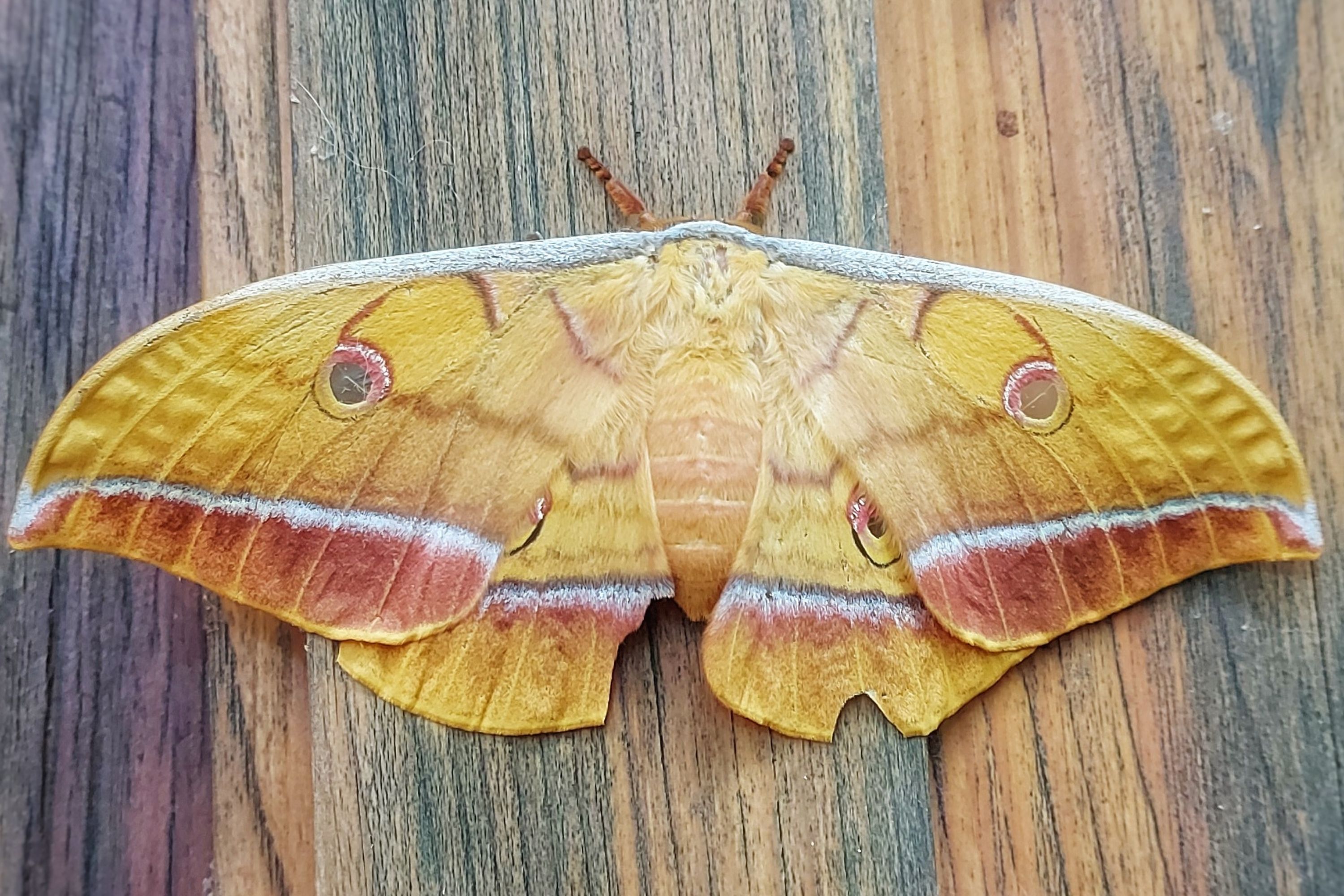Japanese silk moth
(Antheraea yamamai)

Description
Antheraea yamamai, the Japanese silk moth or Japanese oak silkmoth is a moth of the family Saturniidae. It is endemic to east Asia, but has been imported to Europe for tussar silk production and is now found in southeastern Europe, mainly in Austria, northeastern Italy, and the Balkans. It seems to be spreading north and a population has been reported near Deggendorf and Passau in Germany. The species was first described by Félix Édouard Guérin-Méneville in 1861. It has been hybridized artificially with Antheraea polyphemus of North America. This moth has been cultivated in Japan for more than 1000 years. It produces a naturally white silk that is very strong and elastic, but does not dye well. It is now very rare and expensive. The wingspan is 110–150 millimetres (4.3–5.9 in). Adults are on wing from August to September in one generation depending on the location. The larva mainly feed on Quercus species, but have also been reported on Fagus sylvatica, Castanea sativa, Carpinus, Rosa, and Crataegus. In order to look at the tensan silk genes in more detail a de novo genome and set of transcriptomes have been sequenced, producing a 700Mb reference with 15,481 genes. Antheraea is a moth genus belonging to the family Saturniidae. The genus was erected by Jacob Hübner in 1819. Several species of this genus have caterpillars which produce wild silk of commercial importance. Commonly called "tussar silk", the moths are named tussar moths after the fabric. The butterflies of the genus are very large and yellowish to brownish in color. There are large disc-shaped spots on the fore and hind wings. There are no significant differences in wing markings between the sexes. The tentacles are quadruple comb-shaped, in the males they are very broad and feather-like, in the females, however, narrow. The caterpillars are green and have convex segments with distinct but reduced spines or hairs. They pupate in a large, firm ovoid cocoon without a hole. To leave the cocoon, the hatching butterflies release a protease that breaks down the spider silk.
Taxonomic tree:







